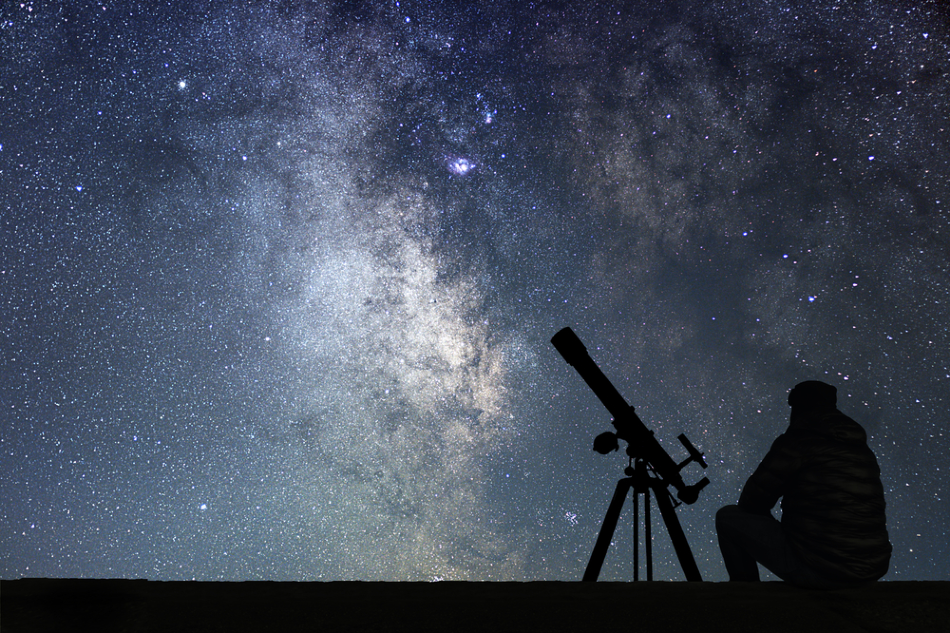A 17-year-old high school student has made a startling discovery a mere three days into their NASA internship: a new planet 6.9 times larger than Earth orbiting two stars.

Image Credit: Allexxandar/Shutterstock.com
After completing his junior year at Scarsdale High School in New York, US, Wolf Cukier’s summer internship commenced at NASA’s Goddard Space Flight Centre in Greenbelt, Maryland. Working with the data captured by the Transiting Exoplanet Survey Satellite (TESS), Cukier was required to analyze the variations of hundreds of eclipsing binaries.
Cukier said: “I was looking through the data for everything the volunteers had flagged as an eclipsing binary, a system where two stars circle around each other and from our view eclipse each other every orbit.”
“About three days into my internship, I saw a signal from a system called TOI 1338 b. At first I thought it was a stellar eclipse, but the timing was wrong. It turned out to be a planet.”
Cukier has been listed as co-author of a paper on the discovery along with scientists from Goddard, San Diego State University, the University of Chicago and other institutions. The findings were recently presented at the 235th American Astronomical Society meeting in Honolulu.
TESS’s First Circumbinary Planet
The new planet, now known as TOI 1338b, is the first circumbinary planet picked up by TESS. TOI 1338 b lies in the constellation Pictor as part of a system 1,300 light years away and is nearly the size of Saturn. The circumbinary system is made up of two stars which eclipse each other from our perspective or plane of view. One of the stars is a cool, small end dwarf while the other has similar properties to our own Sun.
Orbiting its stars every 93 to 95 days, the transits of TOI 1338 b can only be observed by TESS when it crosses the larger star. The data can be challenging to decipher as planetary transits can read similar to some of the eclipses. However, Cukier was able to pick out the correct data points with assistance from his mentor as they noticed “three different dips in the system”, which allowed them to identify and measure the planet.
According to NASA, TOI 1338b experiences frequent solar eclipses as “its suns eclipse each other every fifteen days.” Furthermore, as the angle of the planet’s orbit changes over time, from 2023, it will be eight years before the transits are witnessed again. Meanwhile, TESS will continue on its mission in the search for planets outside of our solar system. The satellite will observe hundreds of thousands of eclipsing binaries meaning there may be other planets similar to TOI 1338 b.
The Transit Method
Fitted with four cameras, TESS captures multiple full-frame images of a patch of sky every 30 minutes over a period of 27 days. Researchers can then use the images and data to plot graphs that correspond to variations in a star’s brightness. Planetary transits are responsible for causing distinctive changes – called dips – in a star’s luminosity. However, planets orbiting two stars can be tricky to identify as they often have irregular transits with deviations in depth and time.
After Cukier’s discovery of TOI 1338 b, the team at Goddard used a programme called eleanor, named after Carl Sagan’s protagonist from the novel Contact, to confirm the authenticity of the planetary transits. However, Cukier still had to visually analyze each probable transit to differentiate between the timings of transits and eclipses in the eclipsing binary. The transit method of planet detection anticipates visual cues for dips in a star’s visible light as planetary transit occurs.
“These are the types of signals that algorithms really struggle with,” said lead author Veselin Kostov, a research scientist at the SETI Institute and Goddard. “The human eye is extremely good at finding patterns in data, especially non-periodic patterns like those we see in transits from these systems.”
“Throughout all of its images, TESS is monitoring millions of stars. That’s why our team created eleanor. It’s an accessible way to download, analyze and visualize transit data. We designed it with planets in mind, but other members of the community use it to study stars, asteroids and even galaxies.”
Adina Feinstein, coauthor, graduate student at the University of Chicago
Scientists working on the TESS missions believe that the satellite will greatly expand the number of known exoplanets similar in size to planet Earth. TESS researchers are hoping to gather a diverse and rich dataset to set up future follow-up studies. Furthermore, scientists from the wider community will also be handed a boost as they can “request targets for astrophysics research on approximately 20,000 additional objects”, according to NASA.
Disclaimer: The views expressed here are those of the author expressed in their private capacity and do not necessarily represent the views of AZoM.com Limited T/A AZoNetwork the owner and operator of this website. This disclaimer forms part of the Terms and conditions of use of this website.